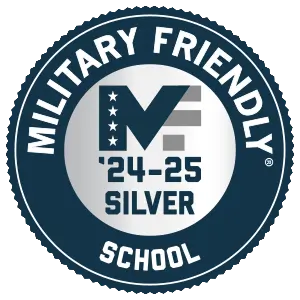An Overview of a Medical Assistant’s Daily Responsibilities
 Are you interested in becoming a medical assistant, but not sure what they do on a daily basis? Medical assistants play a critical role in the healthcare industry. As allied health professionals, they make significant contributions to quality patient care. Trained to perform a broad range of clinical and administrative functions in doctor’s offices, hospitals, and clinics, they’re invaluable members of the healthcare team. But what exactly does a medical assistant do daily, and why is it so impactful? Let’s find out.
Are you interested in becoming a medical assistant, but not sure what they do on a daily basis? Medical assistants play a critical role in the healthcare industry. As allied health professionals, they make significant contributions to quality patient care. Trained to perform a broad range of clinical and administrative functions in doctor’s offices, hospitals, and clinics, they’re invaluable members of the healthcare team. But what exactly does a medical assistant do daily, and why is it so impactful? Let’s find out.
What Does a Medical Assistant Do?
Medical assistants manage clinical and clerical responsibilities in office settings, supporting patients, administrators, and clinicians in many ways. They serve as a crucial link between people and healthcare providers. Everyday responsibilities include:
Preparing Patients for Exams
Medical assistants help prepare patients for physical examinations, escorting them to treatment areas where they help patients change into appropriate attire.
Reviewing Health Histories
Health evolves, changing for better or worse between doctor visits. Medical assistants help providers keep track of changes by reviewing the patient’s medical history. This includes noting their primary complaint, why are they seeing the doctor today, and any changes in their allergies or the medication they take.
Conducting Health Screenings
Preventive screenings are an essential part of examinations because they reveal potential health concerns. Basic assessments of mental health, cognitive function, vision, and hearing provide important clues for doctors to explore.
Taking Vital Signs
Vital signs measure the body’s basic physiological functions, helping healthcare providers diagnose disease. Medical assistants take the patient’s blood pressure, pulse, respiratory rate, and temperature at the start of each visit, laying the groundwork for the doctor’s assessment.
Measuring Weight and Height
Weight and height are used to calculate Body Mass Index (BMI), a tool that healthcare providers use to estimate a patient’s body fat. BMI is an important predictor of many diseases and a better way to calculate many medication dosages. Accurate measurements are critical.
Specimen Collection
When doctors order urine or stool testing, medical assistants collect the specimens following laboratory guidelines. This includes educating patients about proper collection techniques, such as how to obtain a urine sample without contaminating it with bacteria.
Performing Diagnostic Tests
Medical assistants perform diagnostic tests, including EKGs, urinalysis, audiometry, blood glucose testing, and pregnancy screens. This saves patients a trip to the hospital while providing physicians with the results they need to make timely treatment decisions.
Phlebotomy
Blood testing helps doctors diagnose illness and monitor therapeutic drug levels. Medical assistants make it possible by drawing and processing the necessary samples.
Administering Medications
Medical assistants may administer most types of oral, topical, and injectable medications under a licensed clinician’s supervision. Examples include childhood and seasonal vaccines.
Assisting with Surgical Procedures
Doctors need a hand when performing minor surgical procedures in office settings. Medical assistants help by setting up equipment, positioning patients, passing instruments, and performing aftercare, such as bandaging incisions.
Wound Care
Medical assistants don’t assess wounds, but they can provide basic wound care, including cleansing wounds, changing bandages, and removing sutures or staples.
Infection Control
Sick patients leave germs behind on equipment and surfaces. Medical assistants keep patients, peers, and providers safe by disinfecting exam rooms between visits and sterilizing instruments.
Emergency Care
Emergencies aren’t an exception in healthcare, they’re the rule. Medical assistants maintain emergency equipment and support healthcare providers in crisis situations.
Scheduling
Time is a critical resource. As a medical assistant, you’ll work with the front office and clinical crews to schedule the flow of patients in ways that optimize resources while providing timely care.
Patient Registration
Medical assistants may register patients, verifying their demographic and insurance information. This data helps physicians make financially sound treatment choices.
Recordkeeping
Accurate medical records are the key to high-quality care. Medical assistants manage paper and electronic recordkeeping systems, organizing charts and facilitating the flow of data between patients and providers.
Managing Referrals
Primary care providers refer their patients to specialists. Medical assistants coordinate the process by handling appointments and forwarding the necessary health and insurance information.
Billing and Coding
Medical assistants participate in the billing process by coding insurance forms, submitting claims, and collecting payments.
Regulatory Compliance
Healthcare facilities are bound by local, state, and federal laws. Medical assistants work closely with the clinical and administrative teams to ensure compliance with all environmental safety, patient privacy, and billing regulations.
Communication
Medical assistants manage communication on providers’ behalf, making phone calls, writing correspondence, and transmitting prescriptions. You’ll reach out to patients with lab results, appointment reminders, and instructions for procedures.
Inventory Management
Managing inventory ensures that the necessary office and clinical supplies are available when needed. Monitoring usage also reduces waste. Medical assistants stock shelves, remove expired products, and reorder items when quantities run low.
General Office Duties
Medical assistants provide general clerical support for clinical and administrative staff, such as filing, faxing, and sorting mail. No job is too big or too small when you’re part of a team.
How to Become a Medical Assistant
Some medical assistants have an associate degree, but all it takes to become a medical assistant is a vocational school diploma. Vocational training is becoming the most popular choice because it’s fast, flexible, and comprehensive. Graduates qualify for the same jobs as their peers with degrees, but in a fraction of the time.
How Long Is a Medical Assistant Program?
Most healthcare careers take years to train for, you could spend two, three or even more years in college for an entry-level position. But full-time medical assisting students graduate work-ready in just 12 months. Lifestyle-friendly programs offer day, evening and hybrid learning options.
What Will I Learn During a Medical Assistant Program?
Medical assisting programs are designed for students with little experience in the healthcare field. The curriculum is career-focused yet comprehensive, covering these subjects and more:
Human Anatomy
Anatomy and physiology are the study of human body structure and function. Topics in this course include:
Medical terminology — how to decipher complex terms by breaking them down into parts.
Cell and tissue structure — how cells create energy and grow together to form tissue and organs.
Organ systems — the 11 primary body systems, the organs they contain and how they work.
Biochemical processes — the hundreds of chemical reactions within the body that keep us alive.
Reproduction — reproduction issues including pregnancy, delivery, birth, and genetics.
Pathology — abnormal conditions and treatments. Students explore common conditions, treatments, and surgical procedures.
Pharmacology
Pharmacology courses explore the basics of medication administration, such as:
Drug classifications — the different categories of drugs, like antibiotics, analgesics, antihistamines, and bronchodilators, including indications for use, dosage ranges, potential side effects, and safety concerns.
Dosage calculations — factors that affect drug dosages and how to perform dose calculations using formulas and other tools.
Medication administration — techniques for administering oral, topical, and injectable medications.
Adverse reactions — adverse reactions, such as anaphylaxis, are life-threatening. You’ll learn how to identify the symptoms and respond appropriately.
Patient education — how to counsel patients on medication issues, including safe storage and self-administration.
Recordkeeping
Recordkeeping is a broad subject, encompassing both practical skills and regulatory compliance. The subject matter includes:
Electronic Health Records (EHR) — the computerized versions of paper charts used for medical and billing purposes. You’ll learn how to find, update, share and secure data in digital recordkeeping systems.
HIPAA regulations — how to protect patient privacy and confidentiality under the Health Insurance Portability and Accountability Act (HIPAA).
Medical documentation — how to write clear, accurate, and objective notes based on patient reports and observations.
Clinical and Administrative Procedures
Vocational school programs teach the hands-on clinical and administrative skills medical assistants need to thrive, including:
Vital signs — using the same equipment found in medical offices, you’ll learn how to take accurate vital signs and identify abnormal readings.
EKGs — tracings of the electrical activity in the heart, EKGs can diagnose heart attacks, cardiomyopathy, and abnormal heart rhythms. Instructors will walk you through the testing process step-by-step, including how to position patients, place the leads, and take the reading.
Billing and coding — billing in healthcare is different than in any other industry. Students get a primer on insurance models, coding systems, and basic accounting principles.
Client care — how to build better relationships with patients and improve the quality of care through communication, compassion, and cultural competency.
Phlebotomy
Phlebotomy instruction includes the theoretical knowledge, skills and techniques required to safely draw blood from patients. It covers:
Universal precautions and infection control — methods for protecting yourself, patients, and colleagues from blood-borne pathogens.
Venipuncture and capillary puncture techniques — how to obtain blood from veins and capillaries. You’ll practice on simulators and volunteers.
Blood collection equipment and supplies — selecting the proper needles and blood collecting tubes.
Specimen handling and transportation — how to avoid clotting and cell destruction when handling, processing, and shipping samples.
Special procedures for difficult draws, such as pediatric or geriatric patients — positioning and equipment selection based on the patient’s size, age, and physical condition.
Quality assurance and control measures — strategies to achieve consistent outcomes.
Medical Law and Ethics
There are legal and ethical issues inherent in most of a medical assistant’s responsibilities. Students will discuss the regulatory and moral dilemmas common in healthcare settings, such as:
Medical guardianship and powers-of-attorney — determining who makes medical
decisions for patients.
Billing restrictions — the legalities and ethics of billing practices and financial disputes.
Mandatory reporting — the medical assistant’s role in reporting suspicions of abuse.
Final Thoughts
The demand for this healthcare field is growing. The US Bureau of Labor Statistics projects a 16 percent increase in demand for medical assistants in the coming decade. So, if you’re interested in a healthcare career with advancement potential and a stable future, medical assisting is as multidimensional as you are.
Want to Learn More?
Ohio Business College’s Medical Assisting training program will prepare you for a career as a medical assistant, capable of working in any medical office or facility. Our school’s caring instructors have real world experience and will teach you the necessary skills to succeed in the medical assisting profession over the course of our comprehensive training program. We have smaller class sizes than other schools, which gives you more access to personalized attention from our knowledgeable instructors. Plus, our hybrid model offers more convenience and flexibility with both online and in-person components.
If you are interested in a medical assistant profession, let Ohio Business College answer any questions you may have. Contact us today to learn more about our Medical Assistant programs.

